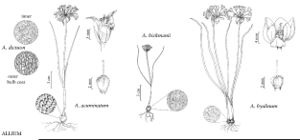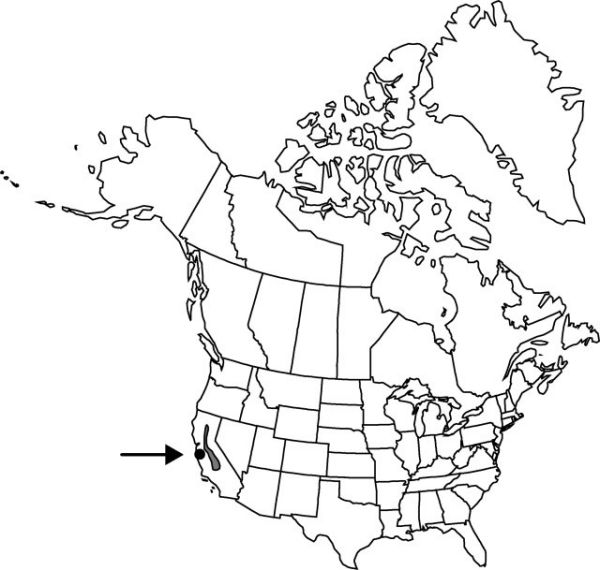Difference between revisions of "Allium hyalinum"
Bull. Calif. Acad. Sci. 1: 155. 1885.
FNA>Volume Importer |
FNA>Volume Importer |
(No difference)
| |
Revision as of 21:42, 16 December 2019
Bulbs generally 2–20+, increase bulbs absent or ± equaling parent bulbs, never appearing as basal cluster, not clustered on stout primary rhizome, ovoid to ± globose, 0.5–1.2 × 0.5–1.2 cm; outer coats enclosing 1 or more bulbs, gray-brown to brown, prominently cellular-reticulate, membranous, cells arranged in ± vertical rows, forming irregular herringbone pattern, transversely elongate, ± wavy, V-shaped, without fibers; inner coats yellow or white, cells obscure, arranged in vertical rows, forming a herringbone pattern or contorted, V-shaped. Leaves persistent, withering from tip by anthesis, 2–3, basally sheathing, sheaths not extending much above soil surface; blade solid, subterete or ± channeled, not carinate, 7–40 cm × 1–3 mm, margins entire. Scape persistent, solitary, erect, solid, terete, 15–45 cm × 2–4 mm. Umbel shattering after seeds mature, each flower deciduous with its pedicel as a unit, erect, loose, 5–25-flowered, hemispheric, bulbils unknown; spathe bracts persistent, 2, 3–5-veined, lanceolate to lance-ovate, ± equal, apex acuminate. Flowers stellate, 6–10 mm; tepals spreading at anthesis, white to pink, lance-ovate to broadly ovate, ± equal, becoming hyaline and connivent over capsule, margins entire, apex obtuse to rounded; stamens included; anthers yellow or purple; pollen yellow; ovary crestless; style linear, equaling stamens; stigma capitate, scarcely thickened, unlobed; pedicel 10–35 mm. Seed coat dull; cells minutely roughened. 2n = 14.
Phenology: Flowering Mar–May.
Habitat: Heavy, clay soils on shaded slopes
Elevation: 50–1500 m
Discussion
Allium hyalinum is known from the Sierra Nevada foothills and inner south Coast Range.
Selected References
None.

